Taoyue Wang
Weakly-Supervised Text-driven Contrastive Learning for Facial Behavior Understanding
Mar 31, 2023Abstract:Contrastive learning has shown promising potential for learning robust representations by utilizing unlabeled data. However, constructing effective positive-negative pairs for contrastive learning on facial behavior datasets remains challenging. This is because such pairs inevitably encode the subject-ID information, and the randomly constructed pairs may push similar facial images away due to the limited number of subjects in facial behavior datasets. To address this issue, we propose to utilize activity descriptions, coarse-grained information provided in some datasets, which can provide high-level semantic information about the image sequences but is often neglected in previous studies. More specifically, we introduce a two-stage Contrastive Learning with Text-Embeded framework for Facial behavior understanding (CLEF). The first stage is a weakly-supervised contrastive learning method that learns representations from positive-negative pairs constructed using coarse-grained activity information. The second stage aims to train the recognition of facial expressions or facial action units by maximizing the similarity between image and the corresponding text label names. The proposed CLEF achieves state-of-the-art performance on three in-the-lab datasets for AU recognition and three in-the-wild datasets for facial expression recognition.
Multimodal Learning with Channel-Mixing and Masked Autoencoder on Facial Action Unit Detection
Sep 25, 2022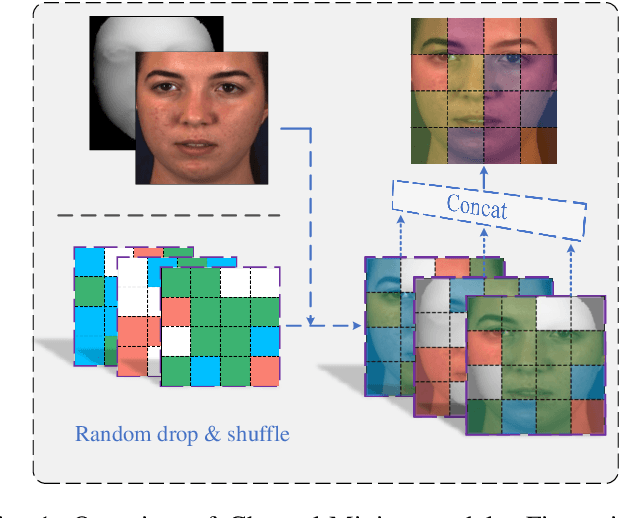

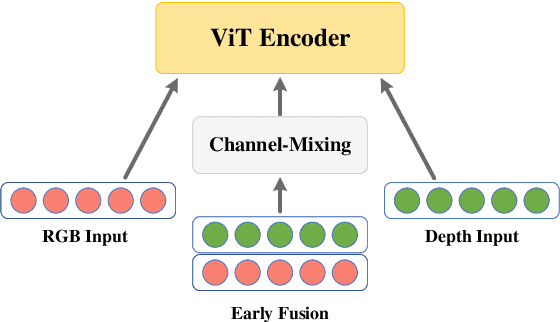
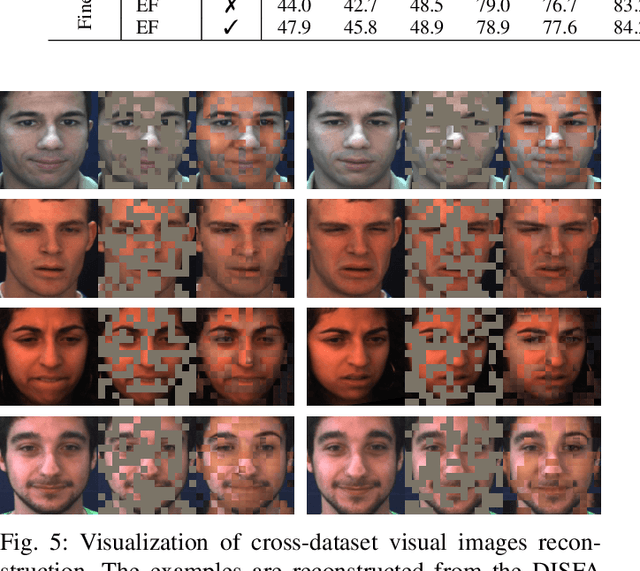
Abstract:Recent studies utilizing multi-modal data aimed at building a robust model for facial Action Unit (AU) detection. However, due to the heterogeneity of multi-modal data, multi-modal representation learning becomes one of the main challenges. On one hand, it is difficult to extract the relevant features from multi-modalities by only one feature extractor, on the other hand, previous studies have not fully explored the potential of multi-modal fusion strategies. For example, early fusion usually required all modalities to be present during inference, while late fusion and middle fusion increased the network size for feature learning. In contrast to a large amount of work on late fusion, there are few works on early fusion to explore the channel information. This paper presents a novel multi-modal network called Multi-modal Channel-Mixing (MCM), as a pre-trained model to learn a robust representation in order to facilitate the multi-modal fusion. We evaluate the learned representation on a downstream task of automatic facial action units detection. Specifically, it is a single stream encoder network that uses a channel-mixing module in early fusion, requiring only one modality in the downstream detection task. We also utilize the masked ViT encoder to learn features from the fusion image and reconstruct back two modalities with two ViT decoders. We have conducted extensive experiments on two public datasets, known as BP4D and DISFA, to evaluate the effectiveness and robustness of the proposed multimodal framework. The results show our approach is comparable or superior to the state-of-the-art baseline methods.
Knowledge-Spreader: Learning Facial Action Unit Dynamics with Extremely Limited Labels
Mar 30, 2022

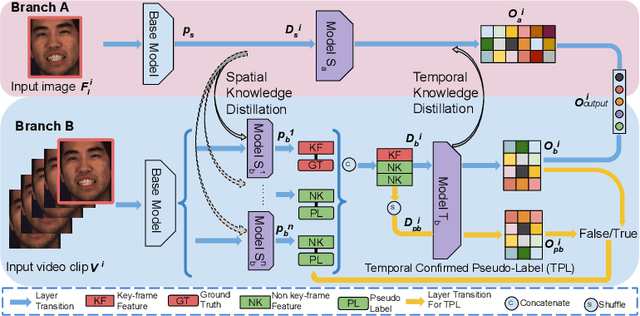
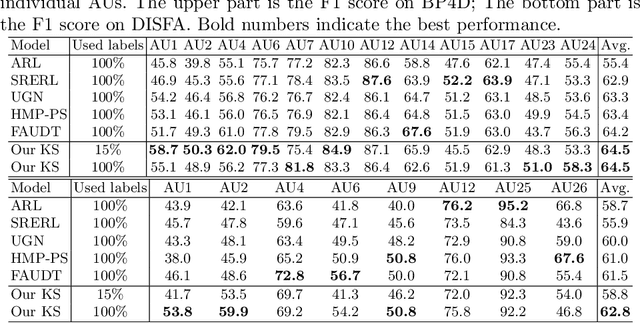
Abstract:Recent studies on the automatic detection of facial action unit (AU) have extensively relied on large-sized annotations. However, manually AU labeling is difficult, time-consuming, and costly. Most existing semi-supervised works ignore the informative cues from the temporal domain, and are highly dependent on densely annotated videos, making the learning process less efficient. To alleviate these problems, we propose a deep semi-supervised framework Knowledge-Spreader (KS), which differs from conventional methods in two aspects. First, rather than only encoding human knowledge as constraints, KS also learns the Spatial-Temporal AU correlation knowledge in order to strengthen its out-of-distribution generalization ability. Second, we approach KS by applying consistency regularization and pseudo-labeling in multiple student networks alternately and dynamically. It spreads the spatial knowledge from labeled frames to unlabeled data, and completes the temporal information of partially labeled video clips. Thus, the design allows KS to learn AU dynamics from video clips with only one label allocated, which significantly reduce the requirements of using annotations. Extensive experiments demonstrate that the proposed KS achieves competitive performance as compared to the state of the arts under the circumstances of using only 2% labels on BP4D and 5% labels on DISFA. In addition, we test it on our newly developed large-scale comprehensive emotion database, which contains considerable samples across well-synchronized and aligned sensor modalities for easing the scarcity issue of annotations and identities in human affective computing. The new database will be released to the research community.
 Add to Chrome
Add to Chrome Add to Firefox
Add to Firefox Add to Edge
Add to Edge